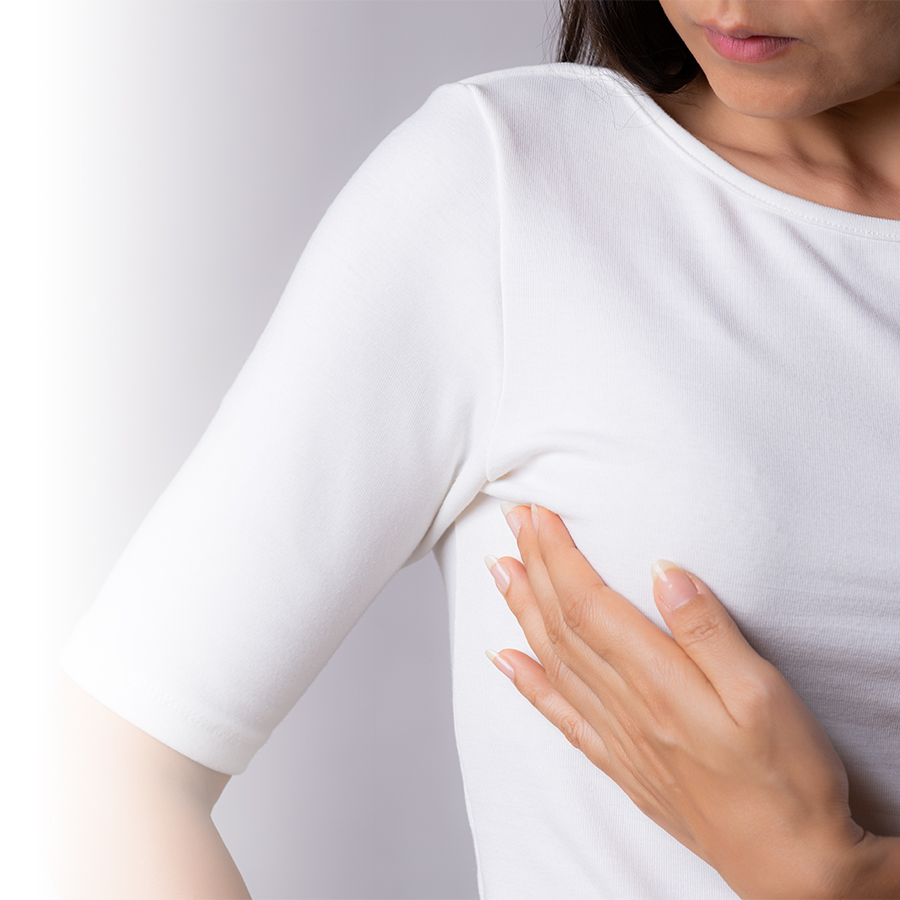Certain beliefs about breast cancer are widespread. This article will help answer questions that many women have.
Myth or fact? By preventing the elimination of toxins through perspiration, antiperspirants are a cause of breast cancer.
Myth. There is no scientific evidence to date that permits us to make a correlation between the use of antiperspirants or deodorants and breast cancer. Moreover, the belief that toxins are eliminated through sweat is false. Instead, they are eliminated by other means such as the liver and the kidneys. Rather, the role of perspiration is to cool the body and help regulate its temperature.
It’s true that breast cancer can spread to lymph-nodes located near the armpits. However, it’s important to understand that a portion of mammary tissue, similar to the one found in the breast, extends under the arm and can be affected by cancer.
Myth or fact? Wearing a brassiere increases the risk of breast cancer.
Myth. When it comes to breast cancer information, it’s better to rely on recognized organizations. To date, the Canadian Cancer Society has not found any scientific evidence supporting such an assertion.
Myth or fact? You are at higher risk of having breast cancer if your mother has or has had the disease.
Fact. If a first degree relative (mother, sister, or daughter) has or has had breast cancer, your risk of having the disease doubles compared to the general population. The risk increases even more if other first degree relatives were diagnosed with the disease. Other hereditary risk factors are well-known. If a close or distant family member has had breast or ovarian cancer, your risk may increase. This is why it is important to speak to your doctor about family history.
Myth or fact? A blow to the chest or physical injury can be the source of breast cancer.
Myth. A study putting forward this theory was analyzed by Canadian Cancer Society experts, but issues found in the study’s methodology led them to reject these conclusions.
That said, a cancer diagnosis may be made when medical tests are run following physical injury. If cancer was already present, tests then allow the disease to be detected.
Myth or fact? Women who have breast implants present a higher risk of advanced breast cancer because it is more difficult to detect during a mammogram.
Myth. Radiation technologists have access to a specific technique which allows them to move breast implants to perform the mammogram. This technique enables them to have access to the mammary tissue and to examine a larger portion of it. Precautions are taken during the exam not to rupture the implants.
According to scientific evidence, when a breast cancer diagnosis is made in women with breast implants, the stage and prognosis of the disease is similar to those observed in other women.
Myth or fact? Mammograms cause cancer.
Myth. It is true that repeated exposure to X-rays can increase the risk of cancer. However, the mammogram uses very low levels of radiation. Therefore, the scientific community believes that the benefits of early detection of cancer using a mammogram largely outweigh the risks. If cancer is already present, breast irradiation or compression of the breast during examination in no way accelerates disease progression.
Myth or fact? Hormones have an impact on breast cancer.
Fact. Oestrogen, the main female hormone, affects mammary tissue cell growth and has a significant impact on the development of breast cancer. Several risk factors of breast cancer are linked to oestrogen exposure, including:
- early menstruation (11 years of age and younger)
- late menopause (55 years of age and older)
- late childbearing (after 30 years of age)
Myth or fact? Breast size influences the risk of breast cancer.
Myth. Breast size has nothing to do with breast cancer. However, mammary tissue density is a risk factor. A breast is said to be dense when it presents more connective tissue, ducts and glands than fat. Mammary density is often a hereditary trait that can only be detected with a mammogram. The dense tissue appears white on the X-ray, just like cancerous tumours, which makes cancer diagnosis more difficult.
Your health professionals are your best allies in obtaining reliable medical information. Don’t hesitate to speak to them if you have any questions or if you’d like to know what impact your lifestyle may have in terms of cancer prevention. Prevention is an integral part of their work, and they are glad to share their knowledge with anyone who would like to know more on the subject!

